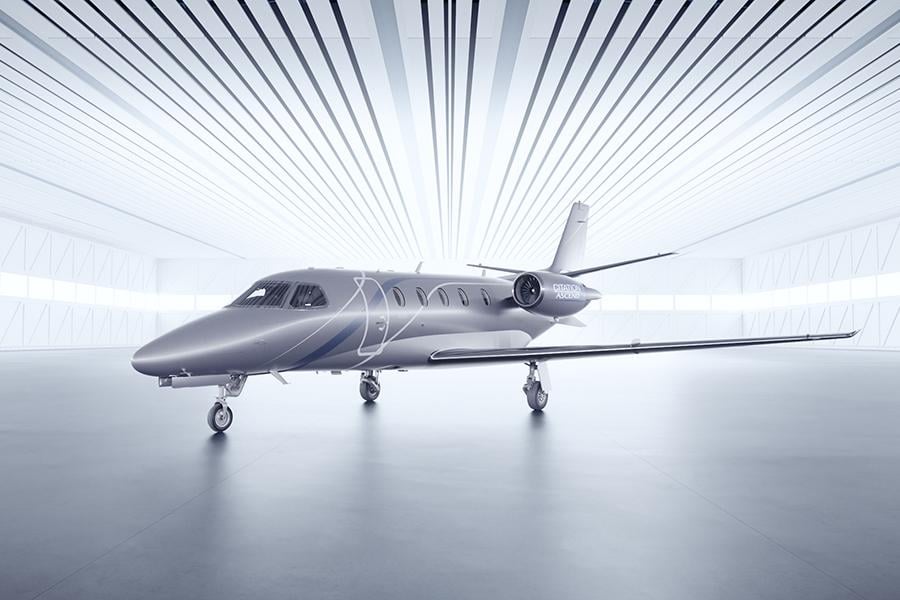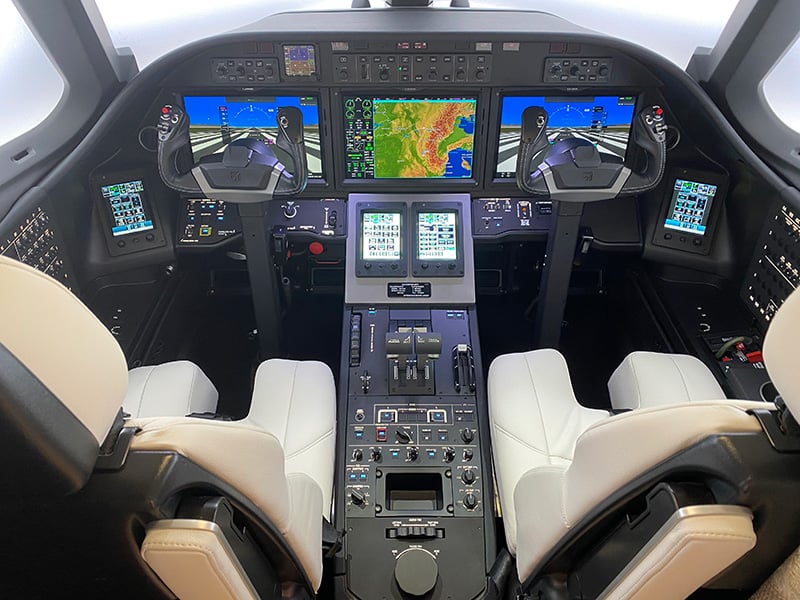
GENEVA—Textron Aviation opened media day at EBACE with the introduction of the nine-passenger Cessna Citation Ascend midsize business jet to replace the Citation XLS Gen2.
There is a mockup of the Citation Ascend, which features an all-new cockpit, improved performance and upgraded cabin, at Textron's stand in the EBACE exhibition hall.
Textron Aviation is taking orders for the $16.725 million Citation Ascend and sees strong demand for the aircraft, company officials say. Entry-into-service is expected in early 2025.
An existing Citation XLS prototype has been flying to test some of the components and technology for the Ascend, officials say, but a first flight of the new variant is yet to take place.
Ahead of its announcement at EBACE, Textron had been running teasers on social media platforms that read: “Prepare to transcend the extraordinary.”
“When I talk about a Citation family, there’s none more flown around the world than the 560 XL—the XL Series aircraft,” Ron Draper, Textron Aviation president and CEO, said during a briefing May 22. “One takes off and lands every two minutes somewhere in the world… Today, we’re excited to announce our latest innovation, an entirely new cockpit, improved performance and incredible cabin experience. The future of flight is found in our new Citation Ascend aircraft.”

Textron Aviation plans to amend the 560XL type certification of the aircraft so pilots may transition to the Ascend through a simple, approved differences course, which is intended to make training easy and cost-effective.
The Ascend was designed with feedback from a customer advisory board made up of owners, pilots, mechanics and passengers.
“We looked at every detail,” says Christi Tannahill, senior vice president of customer experience at Textron. Inside the cabin, the Ascend will have a flat floor, which she says is “a game changer when it comes to comfort. The design gives passengers more room to swivel their seats, stretch their legs and comfortably move around the cabin.”
The Ascend will have a standard configuration for nine passengers and a maximum seating capacity for 12. The aircraft features an updated galley and a fully customizable interior with electrically controlled newly designed seats. Customers may select the level of seat cushion firmness when designing the aircraft, Tannahill says. Quilting, footrests and electrically-controlled lumbar support are optional features for the main cabin seats, while side-facing seats feature fold-down seat backs for additional in-flight accessible storage.
The cabin also features a cabin management system to control the lighting, temperature, window shades, an optional new Bon Jovi sound system and on-board entertainment. It will feature wireless phone charging, three standard universal outlets and 19 standard USB charging ports.

The Ascend includes new, 15% larger cabin windows for more natural light and shade settings for translucent or opaque options controlled from the passenger’s seat.
Gogo U.S. Avance L3 Max Wi-Fi for connectivity will be standard on the aircraft, with options for U.S. Avance L5 Wi-Fi or, for world calling and Wi-Fi, the Aviator 300.
Customers may design their interiors using rapidly renewable and sustainably sourced woods, veneers, carpets and leathers.
“In everything you choose, you have the option to incorporate sustainability,” Tannahill says. Sustainability can also mean luxury. The Ascend mockup showcases a sustainable interior.
Preliminary performance targets include a four-passenger range of 1,900 nm at high-speed cruise power and an estimated maximum range of 2,100 nm. The Ascend will have the ability to cruise at 441 kt. and climb direct to 45,000 ft.
Design improvements include the ability to carry a higher combination of payload and fuel load while retaining access to short runways.
The Ascend will be powered by Pratt & Whitney Canada PW545D engines and come equipped with a Full Authority Digital Engine Control and Garmin G5000 avionics with three 14-in. high-resolution displays, standard dual flight management systems, synthetic vision, cockpit voice and data satellite transceiver and Garmin advanced weather detection and avoidance technology.
For customers enrolled in the company’s PowerAdvantage program, the company offers 18-month or 800-hr airframe maintenance intervals, 6,000 hr. between engine overhauls and 3,000 hr. hot section inspection. It will come equipped with an electronic engine chip detector, LinxUs and LinxUs Air for in-flight diagnostics transmission and Textron’s Aircraft Recording System to track more than 9,000 parameters during operations for troubleshooting and trend monitoring.
It also will feature a new wingtip and all LED lighting and can fly on sustainable aviation fuel.
